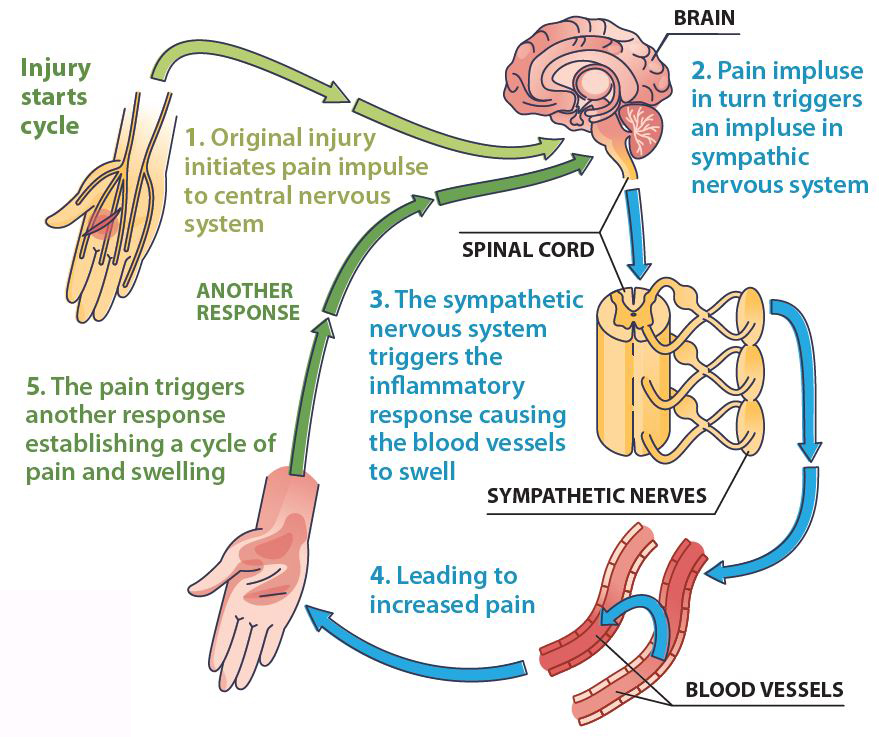Articles by Laxmaiah Manchikanti, MD
and Mahendra Sanapati, MD

What is Complex Regional Pain Syndrome or CRPS?
Complex regional pain syndrome, or CRPS, is also known as reflex sympathetic dystrophy, or RSD, or causalgia. The pain from CRPS usually affects one or more of the extremities. CRPS pain is often described as constant and intense, generally out of proportion with the original injury. CRPS also can cause a change in skin temperature, color, or texture, along with extreme skin sensitivity and swelling or stiffness of the affected area.

CRPS often develops after a minor injury or trauma such as an ankle or wrist fracture or surgery, affecting the nerves, muscles, and tendons. Currently there is no single diagnostic test to confirm CRPS. Consequently, careful examination and assessment is important. Magnetic resonance imaging (MRI) or a triple phase bone scan sometimes identifies CRPS changes in bone metabolism.
Multiple drugs used in managing CRPS are the same drugs used in neuropathic pain such as gabapentin, or Neurontin, amitriptyline, nortriptyline, and pregabalin, or Lyrica. Sympathetic nerve block is one of the management modalities for moderate to severe cases that do not respond to rehabilitation and medication therapy.
Sympathetic blocks provide gradual pain relief by blocking sympathetic nerves. The procedure involves injecting an anesthetic next to the spine to directly block the activity of sympathetic nerves and improve blood flow based on the location of the pain, either the upper extremity or the lower extremity. If all else fails, a spinal cord stimulation, peripheral nerve stimulation and infusion systems may be considered.
